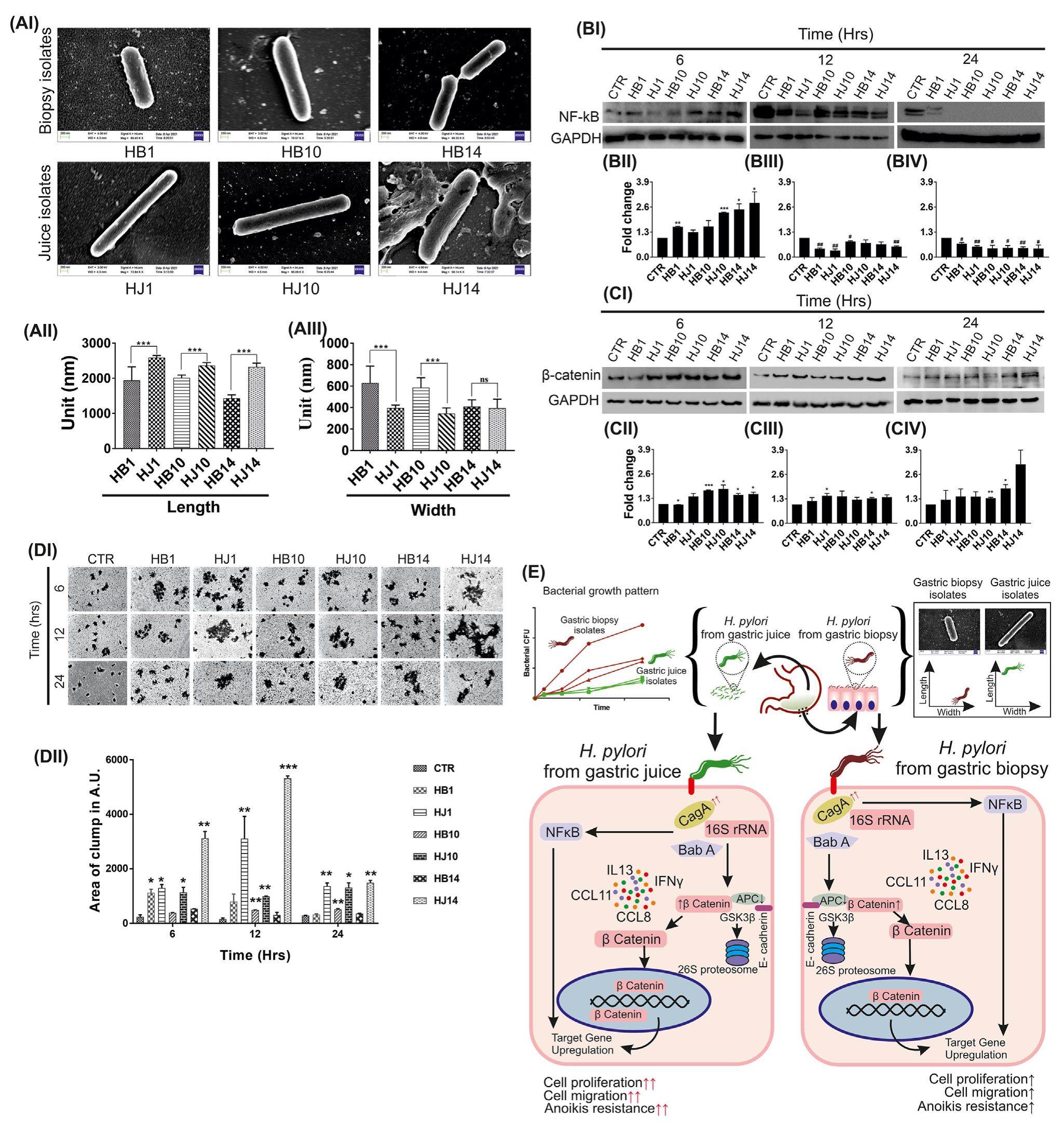
Helicobacter pylori isolated from gastric juice have higher pathogenic potential than biopsy isolates


Persistent gastritis induced by Helicobacter pylori (H. pylori) is the strongest known risk factor for gastric cancer (GC). H. pylori is prevalent in about 50% world’s population, while it causes cancer in less than 2% of exposed individuals. Our studies found that H. pylori infection can induce oncogenic properties in AGS cells by deregulating multiple factors associated with the cell cycle, apoptosis, and other important events associated with cancer progression. Another study, in which we isolated H. pylori from the gastric biopsy and juice sample of suspected gastritis patients, found differential growth patterns of these bacteria. Previous studies have reported the difference between the microbiota in gastric juice and mucosal lining (biopsy). However, none of the reports analyzed the variation between the H. pylori residing in biopsy and juice samples and their morphological, physiological, and pathogenic differences. In this study, we characterized the H. pylori isolates from the two different physiological locations (gastric epithelium and gastric juice) of the same subjects. We assessed the morphological features of the biopsy and juice isolates. The expression profile of GC marker genes, inflammatory genes, metalloproteinases, and the expression of regulatory genes NFκB and β-catenin at 6, 12, and 24 h post-H. pylori infection was also evaluated along with oncogenic property resistance to anoikis.
